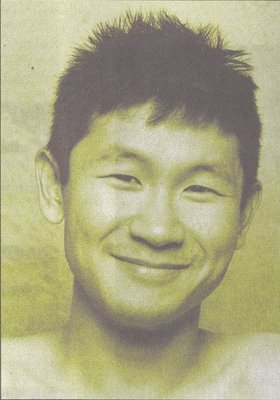Here's an abandoned extract from an essay I was working on for the Shifting Boundaries essay anthology. (It's abandoned because I decided to take the focus away from this portion of the essay, not because I didn't finish the essay itself.)
...But hold on. Am I seriously being nostalgic for a golden era when there was less art in Singapore? Would I actually advocate a cutback on festival funding? Is this panic simply a quarter-life crisis – a realisation that I’m not hip enough to keep up with the entirety of the scene at the sort-of-tender age of 29?
I don’t know. What I do know is that it’s healthy to step back and take stock of where we are in the midst of progress. And it is imperative to remember that we have made progress. This surfeit of arts and design events means we can definitively retire that old cliché about Singapore being a “cultural desert” (and yes, it is extremely extremely old: the first use of the term I can find dates from a 1964 essay by art critic Ho Ho Ying ). (1)
There’s also some evidence that Singapore’s more than the government-micromanaged “bonsai garden” described by Kwok Kian Woon. (2) After all, a fair number of the festivals on the list are organised by groups quite unaffiliated from the government. The Necessary Stage does the M1 Fringe Festival, People Like Us organizes IndigNation, the Singapore Hokkien Huay Kuan does the Singapore Hokkien Festival, while the local embassies of all of the developed nations on the planet seem to be throwing a film festival of some kind.
But if we’re no longer a desert or a bonsai garden, then what have we become? Definitely not the “rainforest” culture which Kwok claims is typical of Southeast Asia, holistic, sustainable and wild. Witness the sheer popularity of arts and culture at all economic levels in the Philippines or Bali. In contrast, MICA boasts of Singaporeans’ increasing interest in the arts, noting that two fifths of us have attended at least one cultural event within the last 12 months. (3)
What we’ve become, I think, is a farm. We are now bigger, and more intensely commercial, than a garden. We exist not only for the pleasure of the beholder, but for the sake of the harvest.
For many, it’s a financial harvest. The government knows that investment in the arts doesn’t just get indirect returns (cultural vibrancy attracts international talent, according to the gospel of Richard Florida), but also direct returns: over $6 billion in operating receipts, (4) not to mention the unseen returns from eating dinner before and drinks after. Indeed, the ‘00s have seen a previously indie scene replaced by a huge wave of commercial theatre and music performances, commercial local film productions and commercial art galleries and art fairs. We are no longer simply part of an arts community, but also an arts industry.
Of course, not all of us are in it for the money. In fact, my metaphor’s inspired by a pretty cool, non-government affiliated collective named FARM that runs a non-profit networking web portal for artists and designers. Core members of the group lightheartedly refer to themselves as “farmers”, and their mission, originally stated on their site, is to “grow local creatives”. (5) Societies like this value art for its own sake, but are similarly driven by a belief that it must grow.
Gardens are maintained, but farms grow. Gardens are sites of leisure, but farms are factories of labour. The hegemonic narrative of Singapore is one of development: fishing village to port, First World to Third World. And development, as we’re told, comes only through hard work.
I’m pretty infused with the agricultural mindset myself. In response to an essay I’d written about the state of Singapore literature, one online commenter noted how I kept resorting to organic images of “growing”, “planting”, “famine” – turns of phrase that the commenter found “a tinge bit biblical”. (6)
Which brings us back to the first question in this essay. Dare we consider the possibility that our years of plenty may soon come to an end?
(1) Ho Ho Ying, “The Current Art Scene in Singapore (1960’s)”, Critical Essays on Art, Singapore Art Museum, 1999, pp, 26-28. Reprinted in Liu Kang and Ho Ho Ying, Re-Connecting: Selected Writings on Singapore Art and Art Criticism, Institute of Contemporary Arts, Singapore, 2005, pp. 64-67.
(2) Kwok Kian-Woon, “The Bonsai and the Rainforest: Reflections on Culture and Cultural Policy in Singapore”, Ask Not: The Necessary Stage in Singapore Theatre, Tan Chong Kee and Tisa Ng (eds), pp. 1-25.
(3) Singapore Cultural Statistics 2004-2008: In Brief, Ministry of Information, Communication and the Arts, National Arts Council, National Heritage Board, National Arts Council and National Library Board, Singapore, 2009.
(4) Ibid.
(5) "I Am a Farmer", Five Foot Way, 22 July 2007.
(6) Ng Yi-Sheng, "Singapore, the City of Poets", Eric Forbes's Blog, January 28 2010.
Thursday, February 04, 2010
Subscribe to:
Post Comments (Atom)


No comments:
Post a Comment